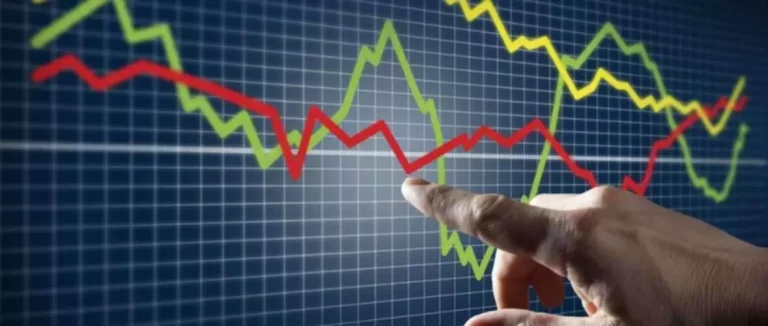Content
Physical replication can be achieved either through full replication or optimised sampling. Synthetic replication generally reduces costs and tracking error but increases counterparty risk. ETFs are popular financial instruments designed to offer investors an easy and efficient way to gain diversified exposure to an etp vs etf entire index or market segment through a single trade.
JPMorgan Stock Hits All-Time High
Therefore by buying this product, investors get direct exposure to the credit risk of the underwriting Prime Brokerage party. They are passive investments aiming to replicate the performance of a given market, generally by tracking an underlying benchmark index. Being generally open-ended investments, they usually trade at or close to net asset value (NAV). In some instances, ETPs may also be referred to as Exchange Traded Vehicles (ETV). The terms Exchange Traded Fund (ETF) and Exchange-Traded Product (ETP) might seem interchangeable, they actually represent distinct categories of investment instruments, each with its unique characteristics, advantages, and considerations.
How Does Liquidity Differ for Different ETPs and ETFs?
ETPs inherit the liquidity characteristics of their underlying ETFs or ETNs. ETCs, which track commodity prices, are listed on stock exchanges and offer accessibility to commodity markets without physical ownership, similar to trading CFDs. The liquidity of ETCs is influenced by the dynamics of the underlying commodity market, including supply and demand https://www.xcritical.com/ factors.
Research the etfs you want to invest in

If you make a request related to personal information about you, you may be required to supply a valid means of identification as a security precaution. The “general tracking information” (which does not allow us to identify individual visitors) gives us a summary view of how the Website is used. We analyze the data to determine how to make the site better and more useful to our users.
- TradingBrokers.com is for informational purposes only and not intended for distribution or use by any person where it would be contrary to local law or regulation.
- Investors should weigh factors like expenses, tracking ability, liquidity, diversification, and risks when choosing between ETPs and ETFs.
- We (or the respective third party owners of content in or on the Website) reserve all rights not expressly granted.
- However, you could be held liable for losses incurred by GraniteShares or another party due to someone else using your account or password.
- Opinions are current as of the publication date and are subject to change with market conditions.
Risk appetite is one of the major determinants when choosing between the two. This is because ETPs have access to a much broader range of crypto products. Liquidity, transparency and regulatory oversight are factors, in which the ETFs have an edge. Crypto ETPs are invariably riskier because their values are tied to the underlying assets and it represents obligation. ETPs are linked with the crypto market and the value has correlations with the credibility of the issuer. ETFs are less riskier because they hold the cryptocurrencies in their portfolio.

ETPs, as a category, encompass both ETFs and ETNs, hence adhering to the respective regulatory frameworks. ETCs are also subject to regulatory oversight, ensuring compliance with applicable regulations. However, they are often used as a means of short-term speculation rather than as part of a long-term investment strategy.
Unless otherwise specified, GraniteShares controls, operates and services the Website from our offices within the State of New York, United States of America. Persons who access the Website do so on their own initiative, and are responsible for compliance with applicable local laws or regulations. Thorough research is vital to successfully incorporating these worthwhile investments in a portfolio. Both ETPs and ETFs can serve a valuable role in asset allocation when they match an investor’s strategy, goals, and risk tolerance.
Certain statements contained herein may constitute projections, forecasts and other forward-looking statements, which do not reflect actual results. Information provided by third party sources is believed to be reliable and have not been independently verified for accuracy or completeness and cannot be guaranteed. ETFs offer efficient, liquid, low-cost market access in a transparent, tax-efficient vehicle. Investors can also choose from various ETFs targeting more specialized market sectors based on their financial goals and risk tolerance. For example, ETNs operate as unsecured debt securities issued by financial institutions. These ETFs give investors a straightforward way to benefit from the price movements of major digital assets without dealing with the complexities of cryptocurrency storage and security.

The prices of the ETFs will increase, and decrease based on the demand as well as the underlying index. The tools provided on the Website (the “Tools”) are provided for informational and educational purposes only. You are solely responsible for evaluating the risks and merits regarding the use of the Tools. As between you and GraniteShares, GraniteShares owns all intellectual property rights, including all copyrights, in the Tools. Before investing, consider the investment objectives, risks, charges and expenses of the ETF.
Both ETFs and ETPs in the U.S. are regulated by the SEC, but regulations vary based on ETP type. Before SPY’s debut, trading the S&P 500 Index was difficult, and investors had to dig into each component stock. SPY would be efficient for gaining exposure to the broad index through a single product. Given the novelty of this product, there were regulatory and logistical hurdles to overcome. Until then, stock exchanges focused on individual company stocks rather than pooled investment products.
When you visit the Website or send e-mails to us, you are communicating with us electronically. We will communicate with you by e-mail or by posting notices on the Website. You agree that all agreements, notices, disclosures and other communications that we provide to you electronically satisfy any legal requirement that such communications be in writing.
Unlike ETFs, which hold a portfolio of assets, ETNs are unsecured debt obligations of the issuer, meaning they represent a promise to pay the investor a return that reflects the performance of the underlying index or asset. ETNs are traded on stock exchanges, similar to ETFs, allowing investors to buy or sell shares throughout the trading day. When investing in ETNs, investors take on the credit risk of the issuing institution, as the return of their investment is linked to the issuer’s ability to fulfill its payment obligations.
Please review the Terms of Use to learn of other terms and conditions applicable to your use of the Website. For information on how GraniteShares uses and protects the personal information you may provide in and to the Website, please read GraniteShares’ privacy policy located on the Website. You may not use the Website to collect or harvest personal information about other persons or otherwise use the Website in a manner that is inconsistent with their privacy or personal data protection rights.
